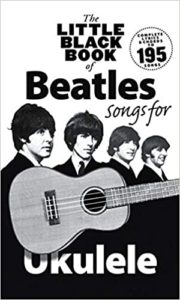I need some advice on the best way to learn how to play a baritone with DGBE tuning.
I played various-sized ukes with GCEA tuning, including a baritone uke I switched to GCEA tuning. However, I just bought a big baritone and I want to know the best way to transition into playing the DGBE tuning. Here are my goals:
I'm sure more than a few of you have walked this path already.
Thoughts? Suggestions?
I played various-sized ukes with GCEA tuning, including a baritone uke I switched to GCEA tuning. However, I just bought a big baritone and I want to know the best way to transition into playing the DGBE tuning. Here are my goals:
- maintain and enhance my ability to play GCEA tuning
- learn how to play DGBE tuning
- eventually arrive where I can easily switch between the 2 types of tuning
- advanced-beginner finger-style... slides, hammer-ons, pull-offs... I can play Stairway to Heaven pretty much flawlessly except for the solo
- intermediate-beginner strums like Iz's island strum
- fairly rusty at reading music and now I pretty much use tablature
- circle of fifths, chord progressions, scales
- hardly any music theory
- start learning music theory, i.e. circle of fifths, etc
- learn how to play the songs I know now on baritone tuning, i.e. forget about transformations, just learn how to play songs with DGBE tuning
- eventually the music theory will catch up and I'll start understanding how the different tuning relate to one another so I can learn a song on one tuning and easily play on the other
I'm sure more than a few of you have walked this path already.
Thoughts? Suggestions?

